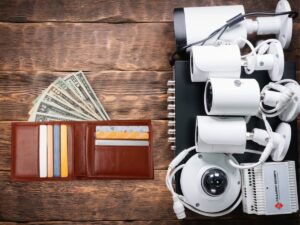Emergency response planning is a crucial aspect of preparedness for any individual, family, or business. It involves identifying potential risks and hazards, establishing communication protocols, creating evacuation plans, developing response teams, conducting drills and exercises, preparing emergency kits, ensuring adequate insurance coverage, staying informed on emergency procedures, and continuously reviewing and updating plans. By having a comprehensive emergency response plan in place, individuals and organizations can minimize the impact of emergencies and protect the safety and well-being of themselves and others.
Key Takeaways
- Emergency response planning is crucial for both homes and businesses.
- Identifying potential risks and hazards is the first step in creating an effective emergency response plan.
- Communication and notification protocols should be established to ensure everyone is informed during an emergency.
- Creating evacuation plans and routes is essential to ensure everyone can safely exit the building.
- Developing emergency response teams and conducting regular drills helps ensure everyone knows their roles and responsibilities.
Understanding the Importance of Emergency Response Planning
Emergency response planning is crucial because it allows individuals and organizations to be prepared for unexpected events and emergencies. By having a plan in place, people can respond quickly and effectively to emergencies, minimizing the potential damage and harm caused. It provides a structured approach to handling emergencies and ensures that everyone knows their roles and responsibilities.
One of the key benefits of having an emergency response plan is that it helps to reduce panic and confusion during emergencies. When people are aware of what needs to be done and have practiced the necessary procedures, they are more likely to remain calm and make rational decisions. This can greatly improve the chances of a successful response and minimize the risk of further harm or injury.
Identifying Potential Risks and Hazards in Your Home or Business
In order to create an effective emergency response plan, it is important to identify potential risks and hazards in your home or business. This involves conducting a thorough assessment of the environment and identifying any potential dangers that could pose a risk during an emergency.
Some common risks and hazards that may be present in a home or business include fire hazards, chemical spills, natural disasters such as earthquakes or floods, power outages, medical emergencies, and security threats. By identifying these risks, individuals and organizations can take appropriate measures to mitigate them and develop strategies for responding to them.
Establishing Emergency Communication and Notification Protocols
Communication is a critical component of emergency response planning. During an emergency, it is important to have clear and effective communication channels in place to ensure that information is relayed quickly and accurately. This includes establishing communication protocols for both internal and external communication.
Internal communication protocols involve determining how information will be shared within the organization or household during an emergency. This may include using designated communication channels such as radios or walkie-talkies, establishing a chain of command for decision-making, and designating specific individuals to be responsible for communicating with emergency services or other external parties.
External communication protocols involve determining how information will be shared with external parties such as emergency services, neighbors, or other stakeholders. This may include having contact information readily available, establishing a designated spokesperson, and determining the most effective means of communication in different scenarios.
Creating Emergency Evacuation Plans and Routes
Having effective evacuation plans and routes is crucial for ensuring the safety of individuals during emergencies. Evacuation plans should outline the procedures to be followed in the event of an emergency, including how to safely exit the building or area, where to assemble, and how to account for all individuals.
When creating evacuation plans, it is important to consider the specific needs and abilities of individuals. This may include identifying accessible routes for individuals with disabilities, ensuring that there are clear signs and directions for evacuation routes, and providing assistance or support for those who may require it.
Developing Emergency Response Teams and Assigning Roles
Having a dedicated emergency response team can greatly enhance the effectiveness of emergency response efforts. These teams can be comprised of individuals within an organization or household who have been trained in emergency response procedures and have specific roles and responsibilities assigned to them.
The importance of having a response team is that it allows for a coordinated and organized response to emergencies. Each member of the team has a specific role to fulfill, whether it be providing first aid, coordinating communication, or assisting with evacuation efforts. By having designated roles and responsibilities, the response team can work together efficiently and effectively to mitigate the impact of emergencies.
Conducting Regular Emergency Drills and Exercises
Regular drills and exercises are essential for ensuring that individuals and organizations are prepared to respond to emergencies. These drills and exercises provide an opportunity to practice emergency response procedures, identify any gaps or weaknesses in the plan, and make necessary adjustments.
The importance of regular drills and exercises is that they help to familiarize individuals with the procedures and protocols outlined in the emergency response plan. This familiarity can greatly improve response times and decision-making during actual emergencies. It also allows for the identification of any issues or challenges that may arise during an emergency, allowing for adjustments to be made to the plan as needed.
Preparing Emergency Kits and Supplies
Having emergency kits and supplies readily available is crucial for ensuring that individuals have the necessary resources to sustain themselves during an emergency. These kits should include essential items such as food, water, first aid supplies, flashlights, batteries, and any other items that may be needed during an emergency.
The importance of having emergency kits and supplies is that they can help individuals to be self-sufficient during an emergency. This is particularly important in situations where access to outside assistance may be limited or delayed. By having these supplies readily available, individuals can ensure their own safety and well-being until help arrives.
Ensuring Adequate Insurance Coverage for Emergencies
Having adequate insurance coverage is an important aspect of emergency response planning. Insurance coverage can help to mitigate the financial impact of emergencies by providing compensation for damages or losses incurred.
The importance of having adequate insurance coverage is that it provides individuals and organizations with peace of mind knowing that they are protected in the event of an emergency. It is important to review insurance policies regularly to ensure that they provide sufficient coverage for potential risks and hazards.
Staying Informed and Up-to-Date on Emergency Response Procedures
Staying informed and up-to-date on emergency response procedures is crucial for ensuring that individuals and organizations are prepared to respond effectively to emergencies. This involves staying informed about potential risks and hazards, as well as any changes or updates to emergency response procedures.
The importance of staying informed is that it allows individuals and organizations to adapt their emergency response plans as needed. By staying up-to-date on the latest information and best practices, individuals can ensure that their plans are effective and aligned with current standards.
Continuously Reviewing and Updating Emergency Response Plans
Emergency response plans should be reviewed and updated regularly to ensure that they remain effective and relevant. This involves conducting regular assessments of potential risks and hazards, as well as evaluating the effectiveness of response procedures.
The importance of reviewing and updating emergency response plans is that it allows for continuous improvement and adaptation. By regularly assessing the plan and making necessary adjustments, individuals and organizations can ensure that they are prepared to respond effectively to any emergency situation.
In conclusion, emergency response planning is a crucial aspect of preparedness for individuals and organizations. By having a comprehensive plan in place, individuals can minimize the impact of emergencies and protect the safety and well-being of themselves and others. It is important to identify potential risks and hazards, establish communication protocols, create evacuation plans, develop response teams, conduct drills and exercises, prepare emergency kits, ensure adequate insurance coverage, stay informed on emergency procedures, and continuously review and update plans. By taking these steps, individuals can be better prepared to respond effectively to emergencies and protect themselves and others.
FAQs
What is emergency response planning?
Emergency response planning is the process of preparing for and responding to potential emergencies or disasters. It involves identifying potential risks, developing strategies to mitigate those risks, and creating plans to respond to emergencies if they occur.
Why is emergency response planning important for home and business owners?
Emergency response planning is important for home and business owners because it helps them prepare for potential emergencies or disasters. By having a plan in place, they can minimize the impact of an emergency and protect themselves, their families, and their businesses.
What are some potential emergencies or disasters that home and business owners should plan for?
Home and business owners should plan for a variety of potential emergencies or disasters, including natural disasters such as hurricanes, earthquakes, and floods, as well as man-made disasters such as fires, chemical spills, and terrorist attacks.
What should be included in an emergency response plan?
An emergency response plan should include a variety of information, including emergency contact information, evacuation routes, emergency supply lists, and instructions for shutting off utilities. It should also include a communication plan for keeping in touch with family members or employees during an emergency.
How often should emergency response plans be reviewed and updated?
Emergency response plans should be reviewed and updated on a regular basis, at least once a year. They should also be updated whenever there are changes to the home or business, such as new construction or changes to the layout.
What resources are available to help home and business owners create emergency response plans?
There are a variety of resources available to help home and business owners create emergency response plans, including online guides and templates, local emergency management agencies, and emergency preparedness organizations.











